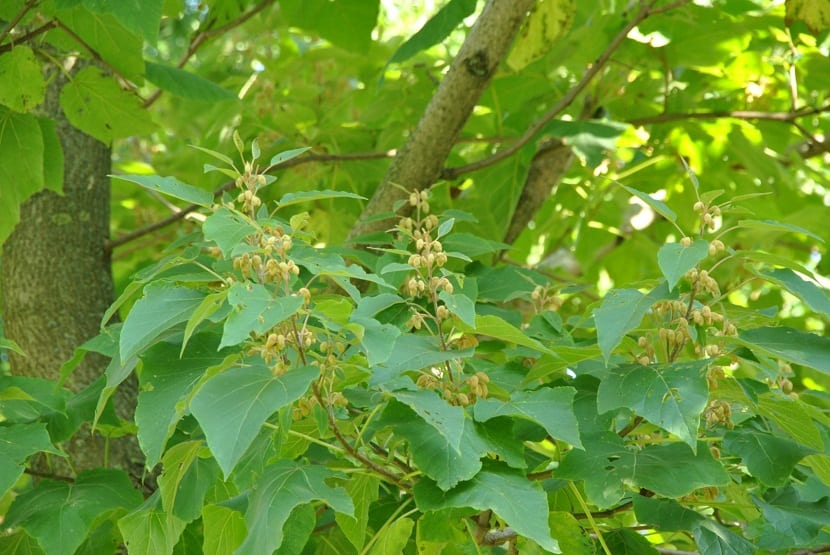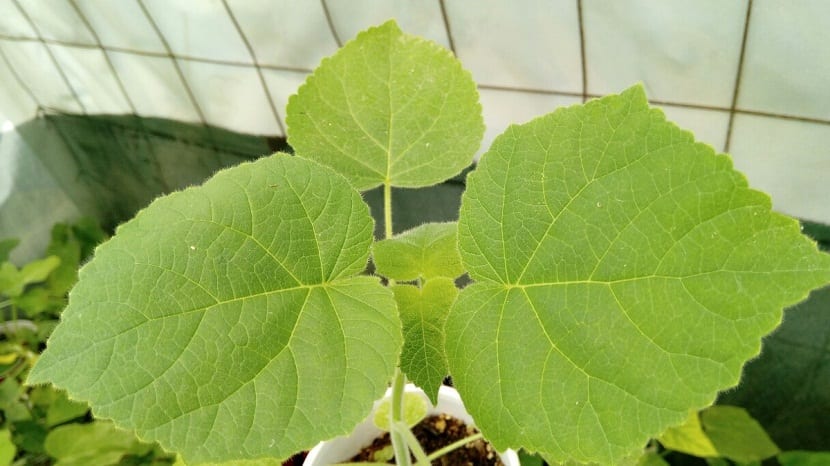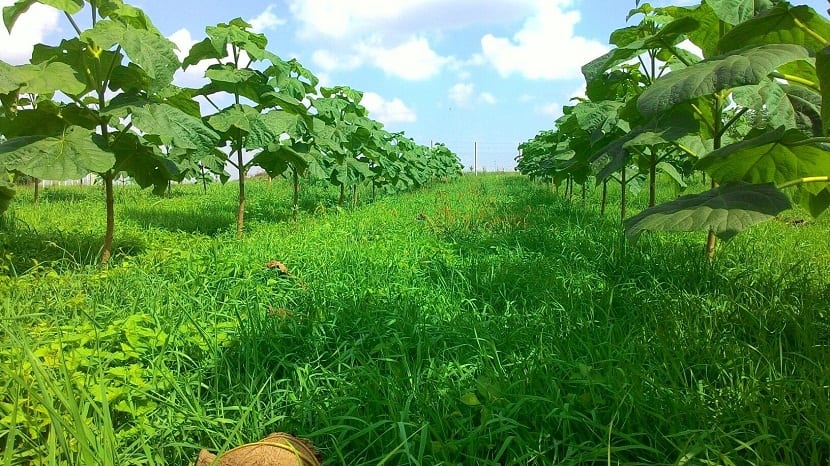
La Pawlonia elongata, also known as imperial paulonia, is an ancient species, since it has been known in China for about 2600 years.
When describing this tree it is impossible not to recognize its aesthetic qualities, its ability to thrive in a variety of environments and the value of its wood, this last aspect being the most outstanding.
Features

This tree is the source of a unique and therefore very special wood, which makes it highly valued in the furniture manufacturing industry thanks to its quality. In addition, its marketing is very efficient given the strict specimen selection processes, which grow very quickly. Another characteristic element is that its leaves are an important source of energy that acts to benefit the soil.
Moreover the cultivation of this tree has two aspects to highlight, the first is that they are trees with good ornamental characteristics, since its striking purple flowers decorate large open spaces, while the second is for forest purposes, which is common in countries such as the United States and China.
Its large leaves are very useful for collecting CO2 and generating clean air, which is vital in the life of our planet. Growth is undoubtedly quite accelerated, standing out mainly in its first year of life, where it reaches 4 meters high without problems.
Its average height reaches between six and seven years, while maturity is achieved at 25 years reaching at this point to easily measure 30 meters high; the crown can reach 12 meters in diameter and the trunk 1 meter.
What uses does it have?
Being its most outstanding characteristic the quality of the wood, it is not surprising the number of uses it has, from the manufacture of veneers, to very resistant furniture. Its rapid growth through cultivation that makes it grow rapidly (up to 4 meters the first year) makes it an interesting and highly marketable tree.
To such an extent that they are part of business projects and scientific studies, all this focused on knowing its characteristics in depth and making use of them to contribute to the environment that surrounds us, making it better and better. Their ornamental features They also make it very common to use them to populate large areas in parks and gardens, since the showy flowers give a lot of showiness to the environment without counting the comforting shade offered by their prominent branches and foliage.
Because it is a fairly light wood, it allows its use in obtaining a mixture of organic substances known as biofuel, which is used in combustion engines.
How is the cultivation of the Pawlonia elongata?

The tree will thrive even when you grow it in hostile soil that is heavily eroded, in these cases it will be enough with choose a good irrigation system and helps the substrate with the supply of organic compost.
Although it is true that under more favorable soil conditions its development would reach its maximum potential, it is necessary to recognize the high capacity of the Pawlonia elongata de use the resources at your disposal to grow, standing out among other tree species. The ideal average temperature is 32º C, however and when we go to extremes it can withstand temperatures between -10º and 55º C. Winter favors the wood, making the texture and tone more defined.
Pruning and the use of fertilizers and compost are perfectly feasible practices in the cultivation of this wonderful tree. When the cultivation is for commercial purposes, branch pruning should be frequentIn fact, the trunk must be completely clean of branches, even those that are located lower, since this gives much more value to the wood.
What pests or diseases afflict this tree?
It is recognized as quite a hardy species, but this does not mean that it is not necessary to take the pertinent measures. For example, its large leaves, in addition to being nutritious, are not exempt from the attack of various pests, so it is advisable to only opt for certified micro-propagating clones. Insects like locusts, crickets and grasshoppers They can cause growth delays in young trees, since they partially eat their leaves, leaving them with holes. Insects are easier to identify and control in small crops, however, other measures should be taken in large ones.
Act quickly. prevent fungus, aphids and mites, since these can appear when the humidity is high, so the use of fungicides is recommended or quickly attack the affected areas to prevent the pest from spreading.
What is the ideal terrain?
Even though the tree is very resistant, if it is within your reach to plant it in a land that is ideal in terms of the quality of the substrate, nutrients, etc., much better. At the same time the characteristics of the climate, water sources and irrigation capacity, among others, are elements that must be taken into account.
Regarding the ideal soil, if it is sandy it is more beneficial, since it will achieve adequate drainage for its development, without much attention. Now this is a tree that can grow on other grounds with some extra care. Depending then on the type of soil, it would be up to you to add organic matter, compost, gravel and other elements that improve conditions.

Care

In the process of tree growth, the nature of this leads him to place greater emphasis on the development of the roots, which sounds logical due to its accelerated growth, as we mentioned earlier, 4 meters in the first year. This results in the first outbreak not developing in the desired way, and it is for this reason that as soon as the first year has elapsed it must be removed. This way you will ensure that the tree develops correctly and that the wood achieves the quality for which it is recognized and demanded in various parts of the world.
And why in the second year? Because as we have said before, during the first year the most important thing is that the root system develops, since upon reaching the first year the sprout will have sufficient stability and width as if to cut it flush with the ground, which will give way to a sprout from the rhizome whose development will be rapid, reaching greater height and much more diameter.
The importance of a much larger diameter is that the tree will have the ability to provide itself with sufficient water and nutrients, becoming stronger and with high levels of growth. The growth of this new shoot will be straight and devoid of branches, which will add a lot of value to the wood. If growth in this second year is optimal, experts recommend trimming it.
Hello, good afternoon, I would like to know what trees to plant, for shade! I live in Chihuahua Mexico, where it can go up to 16 c, low. Sincerely, !!!!
Hi Guillermo.
Here you have a list of small and shady trees 🙂
Greetings.